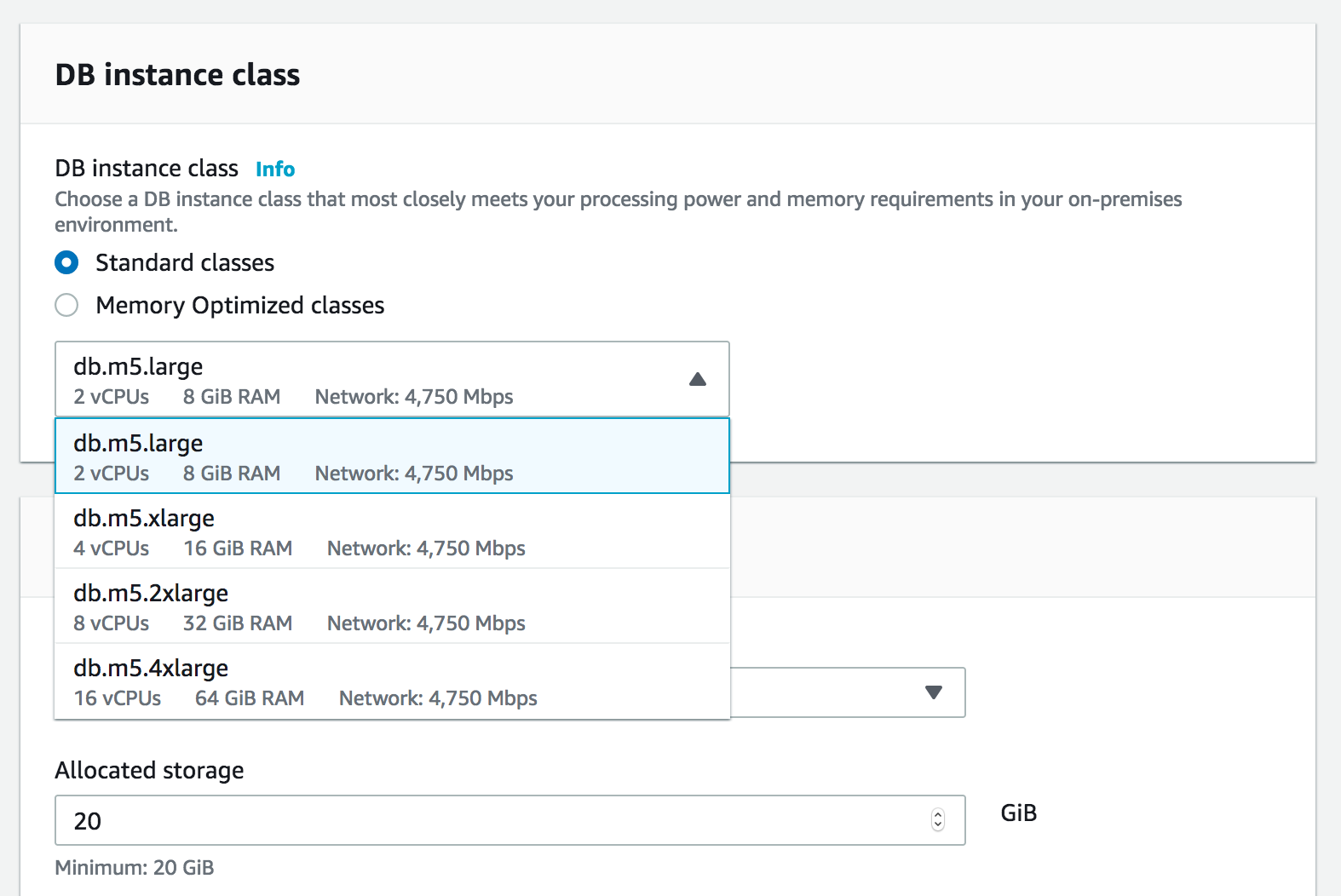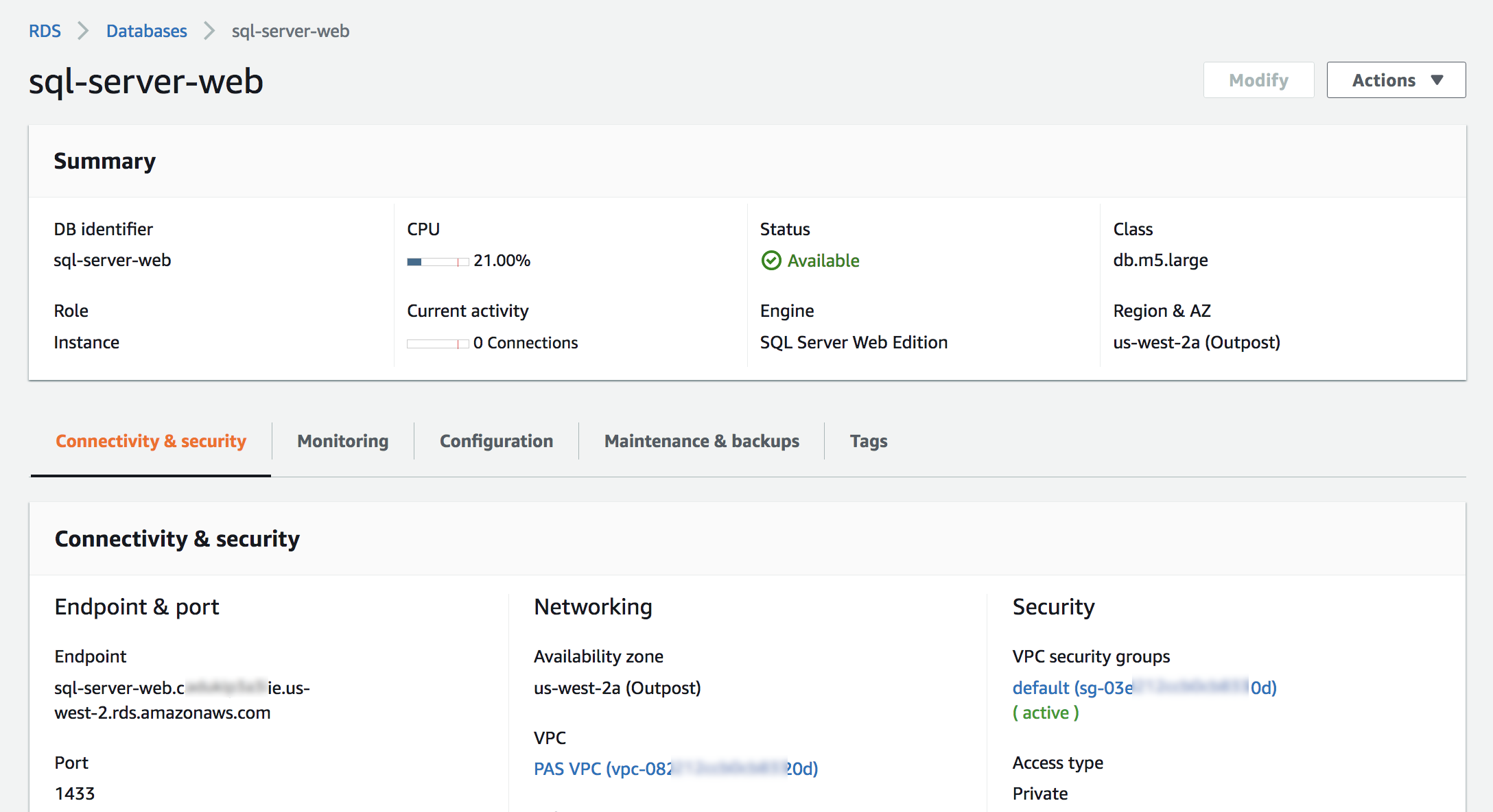 |
Last year, we announced Amazon Relational Database Service (Amazon RDS) on AWS Outposts, which allows you to deploy fully managed database instances in your on-premises environments. AWS Outposts is a fully managed service that extends AWS infrastructure, AWS services, APIs, and tools to virtually any datacenter, co-location space, or on-premises facility for a truly consistent hybrid experience.
You can deploy Amazon RDS on Outposts to set up, operate, and scale MySQL and PostgreSQL relational databases on premises, just as you would in the cloud. Amazon RDS on Outposts provides cost-efficient and resizable capacity for on-premises databases and automates time-consuming administrative tasks, including infrastructure provisioning, database setup, patching, and backups, so you can focus on your applications.
Today, I am happy to announce support for Microsoft SQL Server on Outposts as a new database engine. You can deploy SQL Server on Outposts for low latency workloads that need to be run in close proximity to your on-premises data and applications. All operations that are currently supported for MySQL and PostgreSQL on RDS on Outposts can be performed with RDS for SQL Server on Outposts.
Creating a SQL Server Instance on Outposts
To get started with Amazon RDS for SQL Server on Outposts, in the Amazon RDS console, choose Create Database. Use the AWS Region that serves as home base for your Outpost.
Creating a SQL Server instance is similar to creating a MySQL or PostgreSQL database engine on Outposts. For Database location, choose On-premises. For On-premises creation method, choose RDS on Outposts, as shown here:

In Engine options, for Engine type, choose Microsoft SQL Server, and then choose your edition (SQL Server Enterprise Edition, Standard Edition, or Web Edition) and version. The latest available minor version of each major release, from SQL Server 2016, 2017 up to the newest, which is 2019. There are plans to add more editions and versions based on your feedback.
RDS for SQL Server on Outposts supports the license-included licensing model. You do not need separately purchase Microsoft SQL Server licenses. The license included pricing is inclusive of software and Amazon RDS management capabilities.

In DB instance class, choose the size of the instance. You can select between Standard classes (db.m5) or Memory Optimized classes (db.r5) for SQL Server.

The process for configuring an Amazon Virtual Private Cloud (Amazon VPC) subnet for your Outpost, database credentials, and the desired amount of SSD storage is same as creating RDS instances. When everything is ready to go, choose Create database. The stat of your instance starts out as Creating and transitions to Available when your DB instance is ready:

After the DB instance is ready, you simply run a test query to use the new endpoint:

Now Available
Amazon RDS for Microsoft SQL Server on AWS Outposts is now available on your Outpost today. When you use Amazon RDS on Outposts, as with Amazon RDS, you pay only for what you use. There is no minimum fee. For more information, see the RDS on Outposts pricing page.
To learn more, see the product page and Working with Amazon RDS on AWS Outposts in the Amazon RDS User Guide. Please send us feedback either in the AWS forum for Amazon RDS or through your usual AWS support contacts.
Learn more about Amazon RDS for SQL Server on Outposts and get started today.
– Channy


